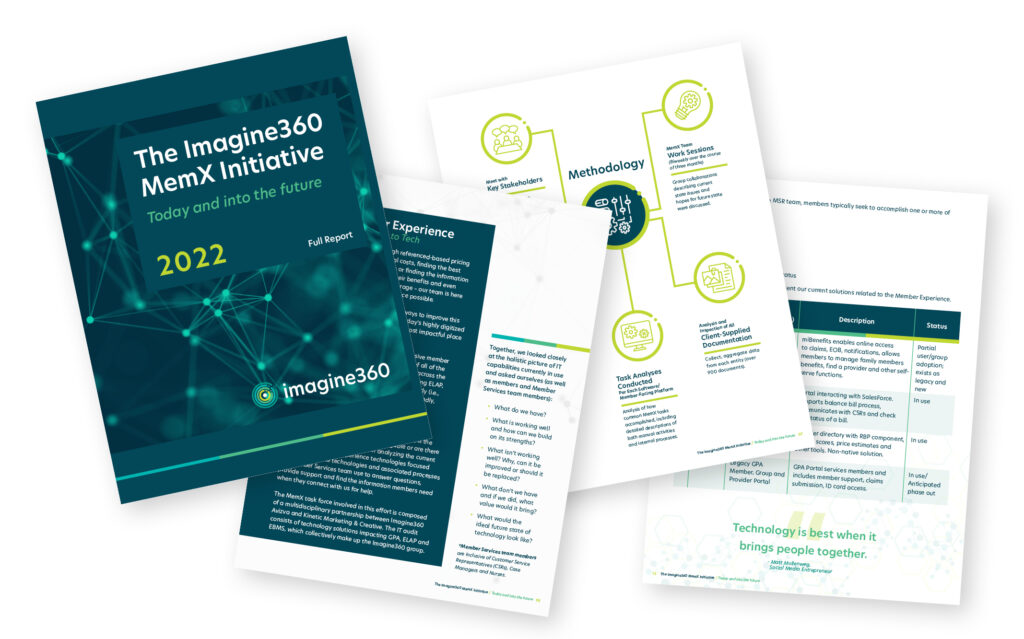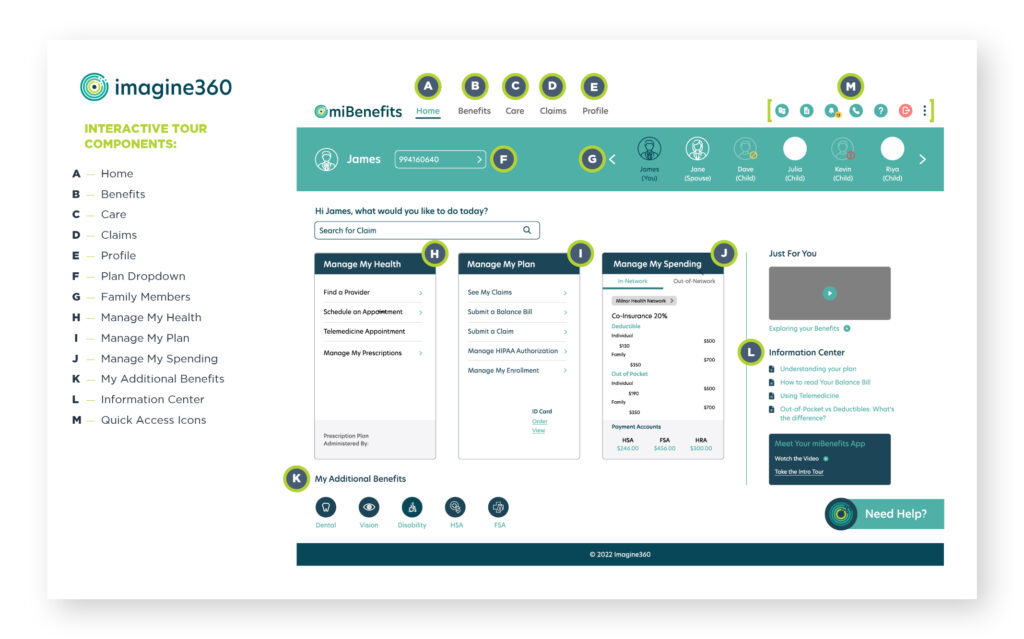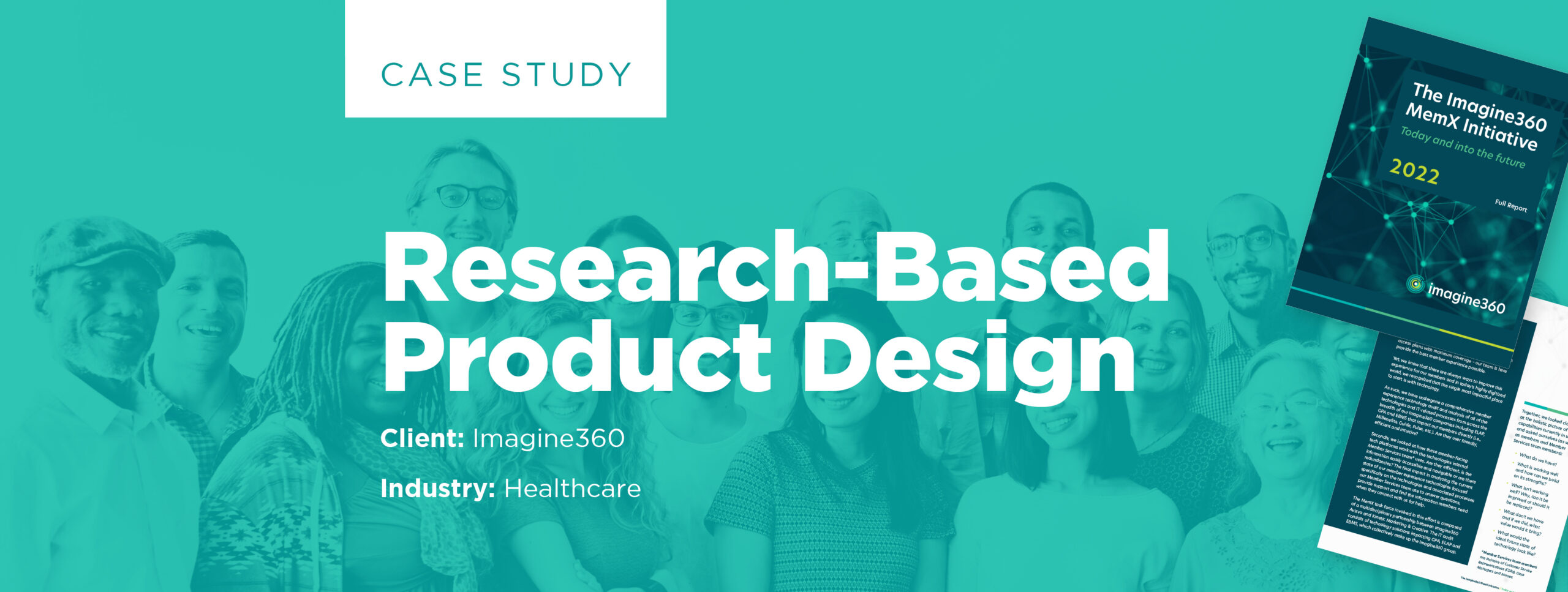Case Study: Research-Based Product Design
Opportunity
Imagine360, which administers self-funded, patient-centered health plans, recently brought together three companies under one roof: EBMS, ELAP Services and GPA. Each of these companies had previously used disparate technologies, platforms and processes, creating inefficiencies and a lack of consistency in user experience. To address these issues, the Kinetic team was brought on to evaluate the current technology and its impacts, ultimately developing a future-proofing technology strategy to inform the product design.
 Actions
Actions
To understand the full picture of the organization’s current technology landscape, the Kinetic team conducted comprehensive primary research. This included interviews with employees, stakeholders and leadership to gain a deep understanding of their needs and pain points.
Based on this research, our team was able to work with Imagine360 to develop a vision of an ideal future state of technology. This involved facilitating and leading a month-long design charrette with leadership and an app developer to design a new, more user-friendly patient portal. To ensure the patient portal would be easy to navigate, the Kinetic team developed an instructional video for patients and an interactive virtual tour of the technology. Best practices for user experience (UX) design were also incorporated throughout the project.
 In addition to informing and offering ongoing support throughout the design of the patient portal, the Kinetic team also developed comprehensive internal and external outreach strategies on behalf of the Imagine360 departmental heads to encourage buy-in and support from upper-level management and stakeholders. This included building a compelling case for the the new technology and outlining the benefits it would bring to the organization.
In addition to informing and offering ongoing support throughout the design of the patient portal, the Kinetic team also developed comprehensive internal and external outreach strategies on behalf of the Imagine360 departmental heads to encourage buy-in and support from upper-level management and stakeholders. This included building a compelling case for the the new technology and outlining the benefits it would bring to the organization.
Results
 As a result of the Kinetic team’s efforts, Imagine360 was able to launch a new patient portal that improved the user experience and increased adoption. The instructional video and interactive virtual tour proved to be helpful in educating patients on how to navigate the new portal. The strategy developed by the Kinetic team helped Imagine360 gain buy-in and support from upper-level management and stakeholders for the project, which led to a successful outcome for all parties.
As a result of the Kinetic team’s efforts, Imagine360 was able to launch a new patient portal that improved the user experience and increased adoption. The instructional video and interactive virtual tour proved to be helpful in educating patients on how to navigate the new portal. The strategy developed by the Kinetic team helped Imagine360 gain buy-in and support from upper-level management and stakeholders for the project, which led to a successful outcome for all parties.
By conducting comprehensive primary research and working closely with stakeholders to develop a vision of an ideal future state, the Kinetic team was able to design and launch a patient portal that met the needs of Imagine360 and its patients.
Let Kinetic design and launch your portal with the best user experience practices. Download a PDF of this case study here.



